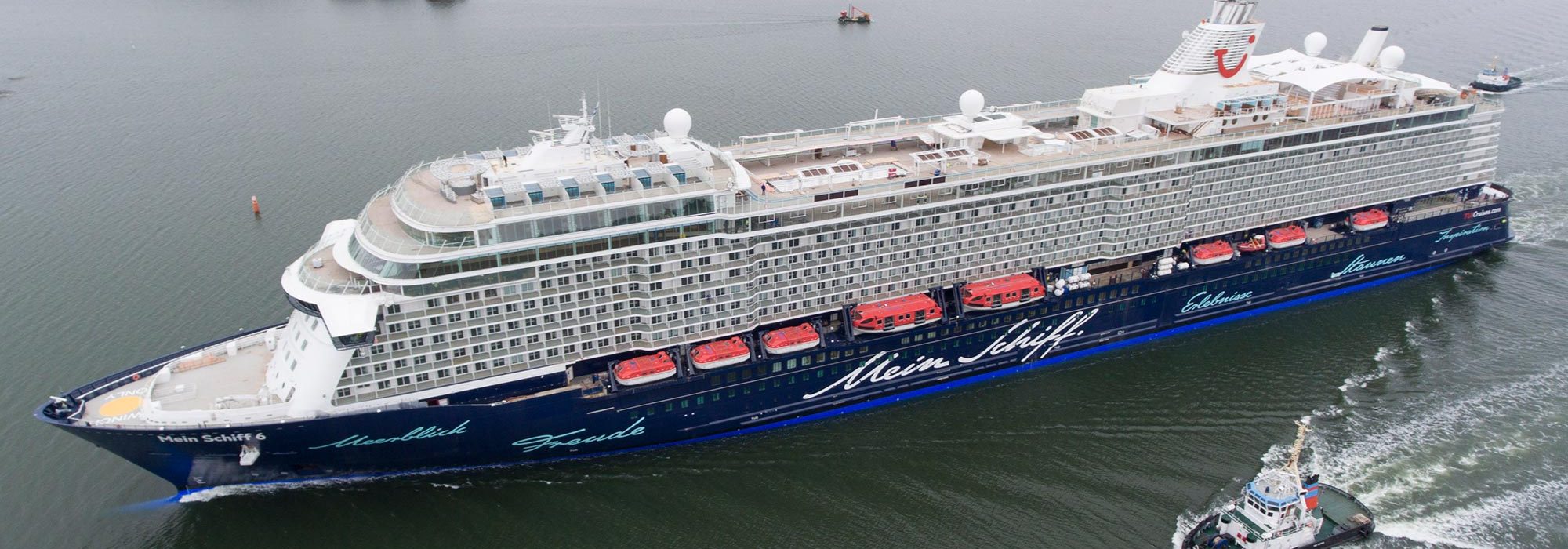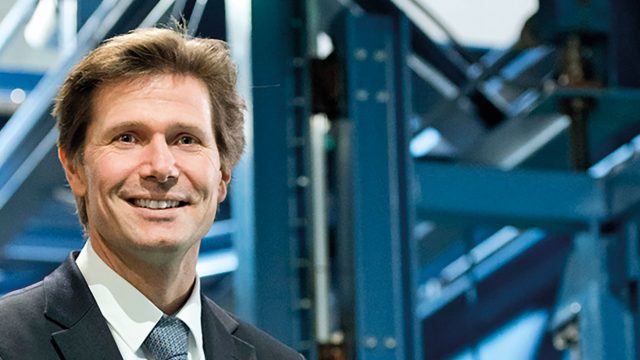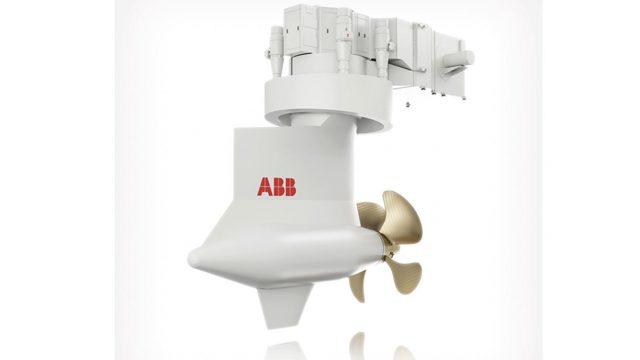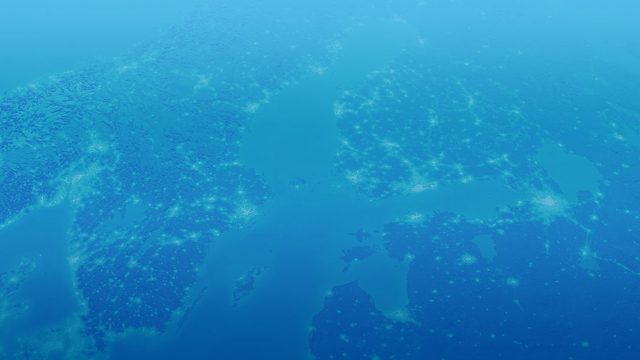Meyer operates today two yards in Germany: the main yard in Papenburg and a smaller yard in Warnemunde, the latter for the construction of smaller vessels and large floating sections for the Group’s other yards.
In 2014 Meyer took a big step of expansion by the acquisition of the biggest yard in Finland, the Turku yard – another specialist yard for cruise vessels.
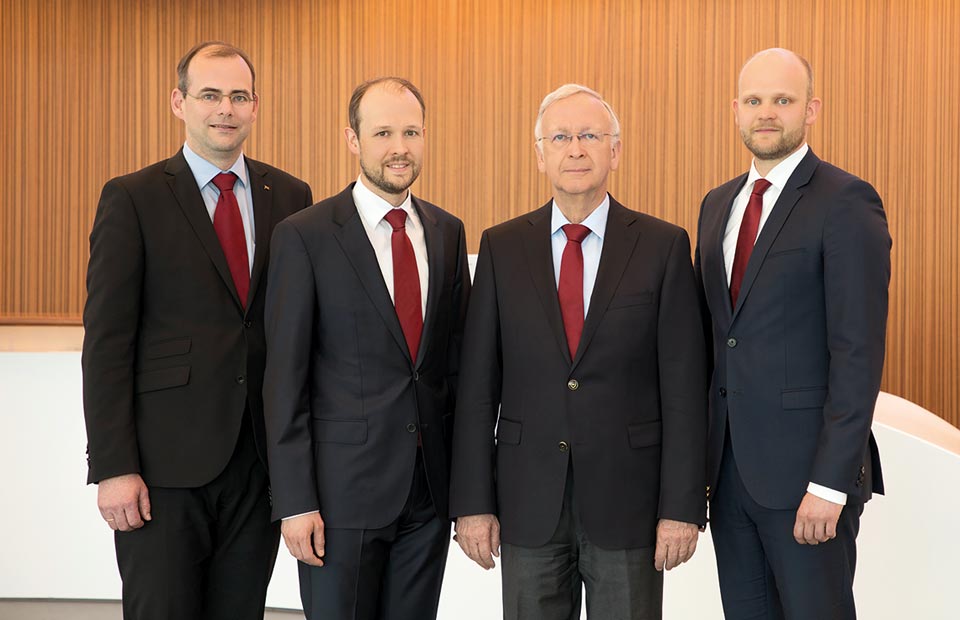
Meyer Group with its three yards is going through a major capacity expansion. What are the key figures of the group after say 3 years?
The biggest capacity increase will take place in Finland where we delivered one mid-size cruise ship per year when we took over the yard. By 2020 Meyer Turku will be able to produce two large cruise ships a year. In Papenburg we are reaching already this year our expansion target by building two big cruise ships a year and one small size cruise ship. Our shipyard in Warnemünde, Neptun Werft, is supporting Papenburg and Turku with floating engine room units and they have been growing recently to supply the demand of engine room units for Papenburg and will further grow for the increasing demand of engine room units in Turku. Currently the whole Meyer group is employing about 7600 employees and will grow to 8500 by 2022. We will then be able to deliver from Papenburg about 400,000 gross tons and Turku about 400,000 gross tons each year.
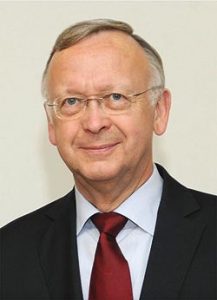
The order book covers today exclusively cruise vessels. Will that be the name of the game also for the foreseeable future of Meyer group?
Definitely our core business is building cruise vessels. Besides that in the last two years we delivered as well a small coastal ferry, a big innovative RoPax ferry and innovative an LNG tanker.
The cruise shipbuilding market has really exploded during the last four years. Does Meyer see that as a sustainable development that would continue and even intensify?
Shipbuilding was, is and will be in the future a cyclical business and the current order volume is also a result of the low order book after the Lehman crisis So it is a natural phenomenon that after years of low order income there are also a couple of years with high order income. This is one reason is that cruising really fits the current consumer market as cruising is a very comfortable nice and relaxing way of travelling and seeing different destinations in one holiday. It is and will be also in the future successful as it offers very high value for money due to the very efficient business model of the ship owners. And one major difference to other shipping markets is that the building capacity is limited. That secures that there is no over-supply of cruise vessels in a short time as we have seen in other markets like in the container or tanker market some years ago.
One would think that the overall business environment must today be exceptionally good with a never-seen workload and the improved prices resulting from the huge demand. Do you foresee any dark clouds for years to come? What are potential risks in the market, if any?
Yes, the good news is: We are not short of orders and we are in good market conditions at the moment with improved prices but also with much higher costs. Especially the supplier market is over-heated and price level is not where it should be. Ship owners are not forced to place new orders. As soon as the price level is getting too high they can also easily wait with new orders. Therefore it is really essential to us and the whole shipbuilding cluster that we stay price-competitive. There are definitely big clouds coming up as we see in Europe many new small shipyards building now smaller cruise ships as well and first contracts and a clear strategic goal of Chinese government supported shipyards to enter the cruise shipbuilding market.
Another risk definitely is governmental intervention.
The capacity for cruise ships which is built up in China is completely out of balance to the demand and will destroy the market not only for shipyards that suddenly have too much building capacity and not enough orders but also in good years there is a high chance that too many cruise ships will be built and enter the market and by that ship owners will finally also be faced much more with the cyclical market. Up to now the limited building capacity for cruise ships was also very beneficial to the ship owners because the cruise market was by that growing maximum with 5-7% per year and therefore the ship owners were also able to do long-term planning because they were assured that not too much capacity will enter the market. Another risk definitely is governmental intervention. Most of our competitors in Europe are either partially or fully government controlled and supported and definitely the new competitors in China are heavily supported by their government while we are a family business and purely rely on our tradition, experience and the strong ability to innovate, be agile and have a long-term business target to develop the company to secure it for the next generations.

It seems that Meyer very much concentrates on large cruise vessels while the small cruise vessel market also is extremely active. Why is that? Why not also small vessels?
Our current order book goes from river cruise vessels with 3,000 gross tons, small cruise vessels with 50,000 gross tons via mid-sized cruise vessels with 110,000 gross tons up to big cruise vessels with 180,000 gross tons and more. So we have a big variety in our order book. Neptun Werft in Warnemünde is specialist for cruise vessels up to 15,000 gross tons. Meyer Werft covers the spectrum from 20,000 to 180,000 gross tons and Meyer Turku from 100,000 gross tons onwards. We are very happy with our current order book of all sizes of cruise vessels, even though we are not active in the expedition market at the moment. However, this market is extremely cyclical. There were more or less no orders for more than 20 years and suddenly there is a huge order book and many small cruise vessels will come into the market in the next years and the market will be saturated for a while.
Meyer acquired the Turku yard about 4.5 years ago. Was the cruise market explosion already seen at that time or was that a positive surprise to Meyer?
At the time of the acquisition it was not foreseeable that the cruise market would develop so positively. Sometimes we simply need to be at the right time at the right place.
What were the main reasons for the acquisition in Finland? Why to Finland?
Since I started my career in 1973 at Meyer Werft we were always competing with the Turku shipyard first in ferries and gas tankers and later on many, many years in cruise ships. The shipyard in Turku was always our hardest competitor because like we they have been always very innovative, very hard working people and delivering good quality in time – all the attributes which are also very important for us. It is not only important that we could grow with the acquisition of the new shipyard, very important for me was also that their DNA is very close to our DNA.
Acquisition in another country often includes a lot of business risks. How after almost five years has the case been with the Turku yard?
We had a good start as at the beginning the Finnish government had a stake as well in the shipyard. They helped us to understand Finnish business practices. On the other hand, as the culture between Finland and Germany is not too different, we had a good start and we are now very happy that we did this decision.

Obviously the operational integration between the yards in Germany and Finland is a must down the road for maximizing efficiency. How is that process developing?
Operational integration comes not from one year to the other, specially if we are building such highly complex products like cruise ships. However, the best visible example of the integration is the floating engine room unit which arrived here in Turku from Neptun Werft in Warnemünde last year as well as all the nine ships which have been ordered by the Carnival group – three AIDA ships and two P&O ships in Germany and two Costa and two Carnival ships for Turku – and which are designed on a common platform being the first fully LNG driven cruise ship platform in the world which was jointly developed by Papenburg and Turku design teams, and all the engine rooms being built at Neptun Werft. This integration process is developing very well and will continue.
There have been quite big differences between the operational procedures and practices in Germany and Finland as the facilities are quite different. Harmonization is an obvious target. How is that process developing?
The most visible difference between both yards is that we are building the ships in Papenburg in a covered building dock and the ships in Turku in an open building dock and that the integration of the subcontractors is slightly different. However, there are also many areas where we had and have a similar approach like high amount of modularization, high focus on process efficiency, high focus on quality and in-time delivery not only for the whole ship but also for the intermediate processes. Due to many changes in ownership in Turku in the past there was a huge backlog of investments that we are catching up now. So Turku will get for example latest laser welding technology installed at the moment with all the learning and improvements from twenty years of laser welding experience in Papenburg compared to new and innovative ideas from the production team in Finland.
Are there differences between Germany and Finland in the state support role and the attitude of the states to shipbuilding industry? What are they? Any improvements desired?
Germany and Finland act very similar. They are both supportive of the industry and both have more the Northern European attitude of following international rules and regulations extremely strictly with tight interpretations compared to the one or the other South European country which is stretching the rules. Therefore Germany and Finland are playing on the same equal field. Major difference between Germany and Finland is that due to the size of the country and economy the role of shipbuilding in Germany is insignificant and in Finland it plays an important role.
Cruise ship construction requires very specific skills. In today’s labor market this must be a major challenge. How does it look for years to come? Any differences between Germany and Finland in this area?
Yes, it is right, construction of cruise ships requires very specific skills. We require workforces in all sectors and that is also the big beauty of shipbuilding that each and every skill and task is needed to engineer, design, build and test such complex products, and you easily can see that on our homepage while screening open positions that the labor market in Germany is at the moment much tighter due to the much lower unemployment rate but due to our attractive conditions giving a long-term perspective we are also an attractive employee and therefore we continue to find the right persons. There are not many businesses where you are producing such interesting products and having such a long-term view of contracts up to 2020.
We in Finland are very proud of our innovative activities and track record in cruise shipbuilding segment. How do you assess the contributions by Finns in the past and potentially in the future?
The Finns have shown in the past that they are extremely innovative and we are 100% sure that they will be very innovative in the future too. Finnish education is top in the world and together with good and strong universities this is the basis for not only our but also Finland’s success. Our task is to give our employees also the right platform to innovate and we are showing that with each and every ship delivery. Right now we have many innovations under development, which you will see afloat in a few years and we will show and talk about them when they are ready to present.
Ships based on one and the same technical platform are being built nowadays in Germany and Finland for a total of four Carnival brands. What are the experiences of this kind of rationalization?
Of course it helps to generate a good purchase power. However, the biggest effect will be later on for the ship owner as he saves a lot of costs with a harmonized fleet in spare parts but also in crew training.
Meyer and Fincantieri with STX France under the acquisition process together cover today about 90% of all cruise ship new building volume. How likely is that the duopoly also will continue in the future?
We definitely see other shipyards in the future there as well, starting from MV Werften in Germany but also especially Chinese gonvernment-owned shipyards will have share in the future.
Differences between Fincantieri and Meyer? Meyer is a private group, Fincantieri is majority owned by the Italian state. Is this difference an element in competition? Is there a real level playing field with European yards?
We should not touch about others. We definitely know that we as a privately owned company have to solve our problems by ourselves. This was our strength in the past and will be our strength in the future.
The entrance of Asian yards to cruise-ship construction has been discussed for the last twenty years. Japan seems to be out and so is South Korea. But China is becoming an issue. How do you see the potential role of Chinese yards in the future and when?
The difference between South Korea and Japan trying to enter the cruise market in the past compared to China nowadays is that the Chinese government has a long-term strategy to enter into that market and that the shipyards entering the market are government controlled. In Japan and South Korea the attempts were driven by commercially driven shipyards where after a proper risk analysis they had not started to enter the cruise ship segment or when they started and failed they have withdrawn. In China the whole case is completely different as the government support is so strong that for many years they do not need to make money with building cruise ships. They just have to fulfill their strategic approach with the full support of the government without any relation and correlation to normal economic standards.
How will Meyer tackle the upcoming competition from China?
Due to the nature of our family business we are extremely customer-oriented with the focus of long-term business relationship combined with a high focus to innovate and deliver always the best and most efficient solutions for ship owners. In the end innovation combined with high quality and high reliability will be a key factor of success and to reach that we have a very loyal, encouraged and highly motivated and innovative workforce and this will be the backbone of our future success.
Large cruise vessels are now being built in Europe at yards that build only cruise vessels and practically no other products. Does that indicate that the only way to build cruise vessels competitively is to build at yards dedicated to cruise ships only?
Large cruise ships definitely need a very special infrastructure and also very special workforce. Therefore it is quite natural that a yard that will be successful in that market is not only specializing the whole organization but also the shipbuilding cluster around this ship type and due to the long lead time and the early commitment of cruise ship owners it is quite difficult to have other products in the portfolio as well at the same shipyard and the same slots.
Meyer group has today numerous wholly owned subsidiary companies for specialized operations like ship design, cabin manufacturing, AC systems, interior accommodation, turnkey piping system production, painting etc. Is further expansion of delegation to subsidiaries anticipated? What is the business rational of this development?
In the last twenty years we have created a very intelligent and highly competitive and innovative shipbuilding cluster with a good split between companies which only deliver products to Meyer shipyards and which are exclusive producers like the two cabin factories, which are fully occupied by the own demand and where we are completely relying on them as our single source suppliers. And we have in other areas other subsidiaries that compete with similar companies in the market, which we use to develop innovations first. However, the biggest part of the business we will work together with specialists in the whole world and only for a few dedicated areas we will have own subsidiaries or joint ventures and we feel very happy with this balance at the moment.

You personally represent the sixth generation of the Meyer family in the history of the group. Obviously the seventh generation is already stepping in. Do you see a smooth transition?
The smooth transition has already been proven since many years. My oldest son, Dr. Jan Meyer, is very successfully leading the shipyard in Turku while my second son, Tim Meyer, is focusing on the shipyard in Papenburg, and my third son, Dr. Paul Meyer, is CIO for all three shipyards and all affiliated companies of the Meyer Group, making sure that our IT systems are fit for the future. So they all have already taken over big responsibilities for years and we are talking a lot within the family, have a very good exchange, and my sons are running the day-to-day business and I can give my advice with 45 years of shipbuilding history when I am asked. The transition between my father and me worked extremely well and that helped me a lot to manage also the transfer to the next generation. This is all in good hands.
Finally, what overall message would you like to convey to the Finnish maritime industry cluster?
Our aim is to secure long-term shipbuilding success in Finland. We are investing heavily in the shipyard in Turku and we will be a very reliable and long-term-oriented owner of the shipyard who permanently likes to develop and optimize to stay competitive not only the own shipyard, but together with all the hundreds of suppliers in the Finnish maritime network. We are happy to be in Finland and are looking forward to a long and fruitful cooperation.
Text EERO MÄKINEN Photos MEYER

